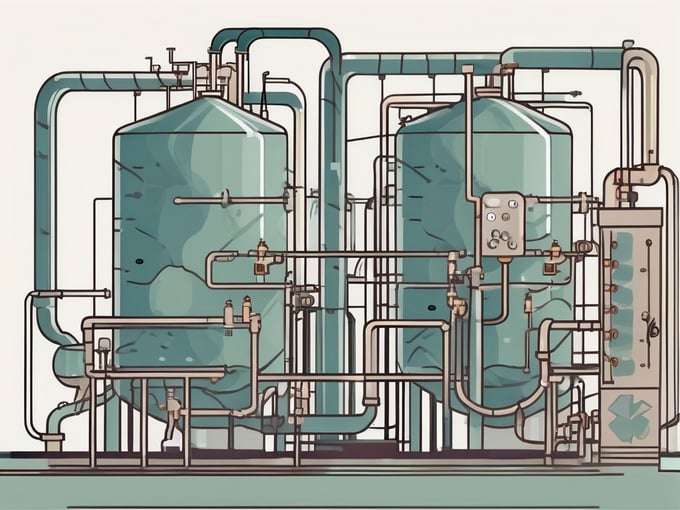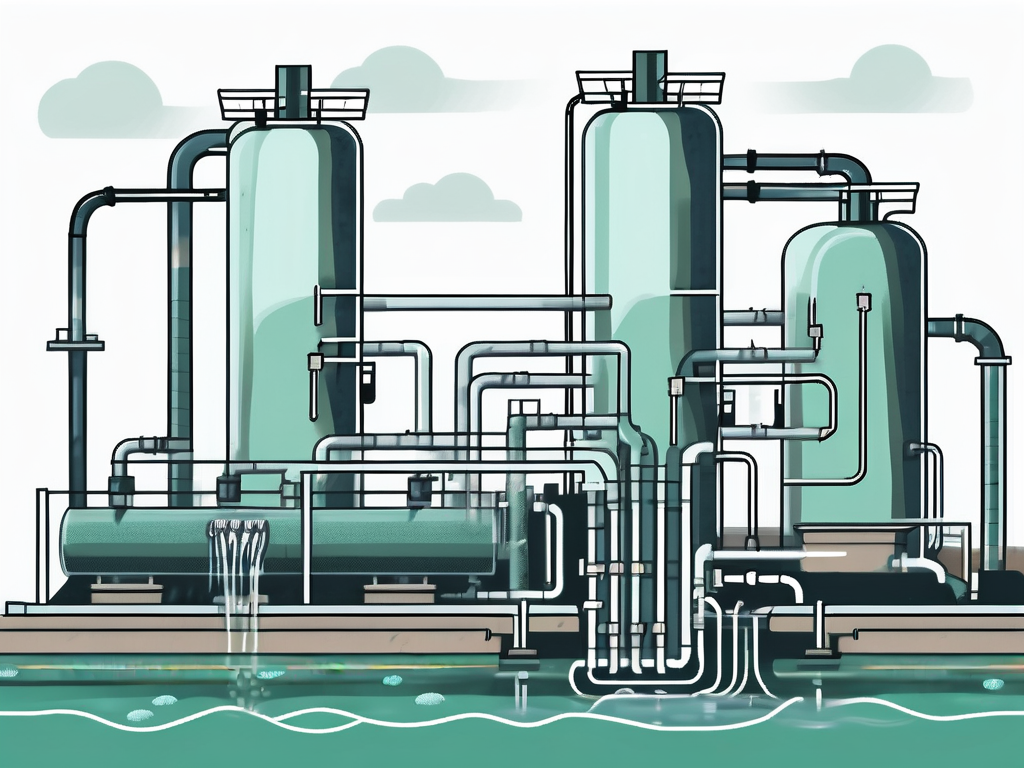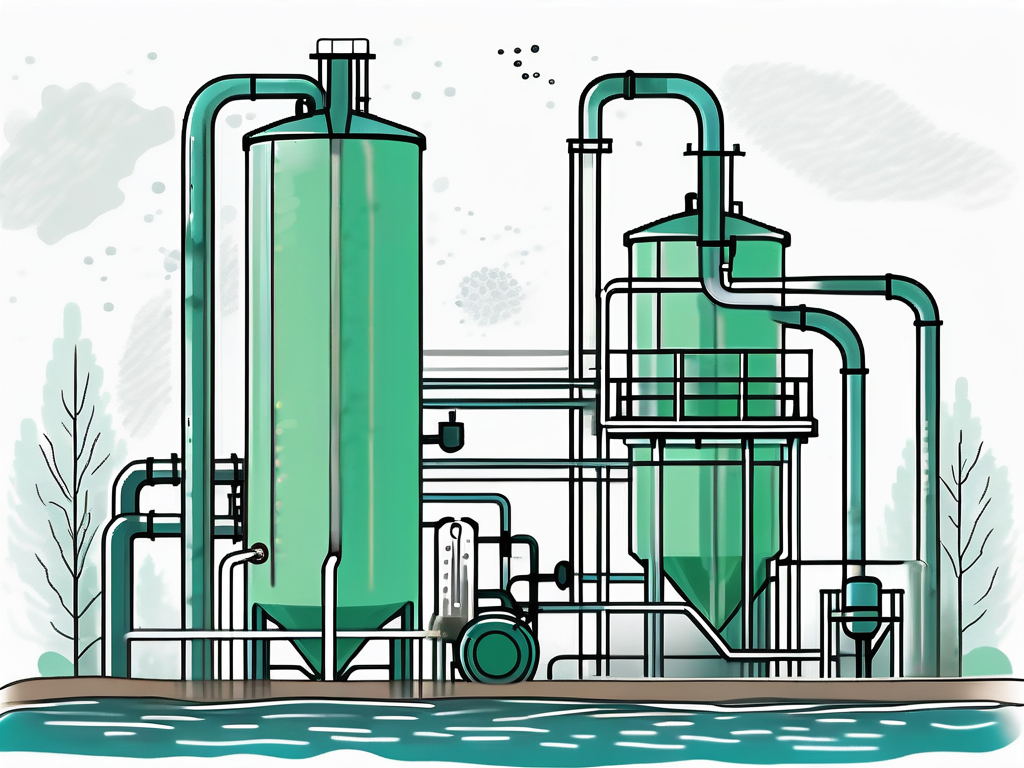
Pathogen: Wastewater Treatment Explained
Wastewater treatment is a crucial process in maintaining public health and environmental safety. This article delves into the role of pathogens in wastewater treatment, providing a comprehensive understanding of the subject matter. The term 'pathogen' refers to any biological agent that can cause disease or illness in its host. In the context of wastewater treatment, pathogens are harmful microorganisms that need to be removed or neutralized to ensure the treated water is safe for reuse or discharge into the environment.
Pathogens in wastewater can originate from various sources, including human waste, animal waste, and contaminated water or food. They can be bacteria, viruses, protozoa, or helminths (worms), each posing different challenges to wastewater treatment. Understanding the nature and behavior of these pathogens is key to designing and operating effective wastewater treatment systems.
Types of Pathogens in Wastewater
Wastewater can contain a wide variety of pathogens, each with unique characteristics and potential health impacts. These can be broadly classified into four categories: bacteria, viruses, protozoa, and helminths.
Bacteria are single-celled organisms that can cause diseases such as cholera, typhoid, and dysentery. Viruses are even smaller than bacteria and can cause illnesses like hepatitis and polio. Protozoa are single-celled organisms that can cause diseases like giardiasis and cryptosporidiosis. Helminths are parasitic worms that can cause diseases like schistosomiasis and ascariasis.
Bacteria
Bacteria are among the most common pathogens found in wastewater. They are single-celled organisms that reproduce quickly, often causing diseases in humans and animals. Some bacteria are beneficial and play a vital role in the wastewater treatment process, but others can be harmful and need to be removed or neutralized.
Examples of harmful bacteria found in wastewater include Escherichia coli (E. coli), Salmonella, and Vibrio cholerae. These bacteria can cause diseases like diarrhea, typhoid fever, and cholera, respectively. The presence of these bacteria in wastewater is a significant concern, as they can contaminate water bodies and pose a risk to public health if not properly treated.
Viruses
Viruses are smaller than bacteria and can cause a variety of diseases in humans and animals. They are obligate parasites, meaning they need a host to reproduce. Viruses in wastewater can originate from human waste, animal waste, or contaminated water or food.
Examples of viruses found in wastewater include Hepatitis A virus, Norovirus, and Poliovirus. These viruses can cause diseases like Hepatitis A, gastroenteritis, and polio, respectively. Like bacteria, viruses in wastewater need to be removed or neutralized to prevent disease transmission.
Pathogen Removal in Wastewater Treatment
Wastewater treatment involves several processes designed to remove or neutralize pathogens. These processes can be physical, chemical, or biological, and are often used in combination to achieve the desired level of pathogen removal.

Physical processes include sedimentation, filtration, and flotation, which remove pathogens by physical separation. Chemical processes involve the use of disinfectants like chlorine, ozone, or ultraviolet light to kill or inactivate pathogens. Biological processes rely on microorganisms to break down organic matter and pathogens in the wastewater.
Physical Processes
Physical processes in wastewater treatment involve the removal of pathogens by physical separation. Sedimentation is a common physical process where wastewater is held in a tank to allow solids to settle at the bottom. This process can remove larger pathogens like helminths and some bacteria and protozoa.
Filtration is another physical process where wastewater is passed through a filter to remove particles and microorganisms. The effectiveness of filtration depends on the pore size of the filter and the size of the pathogens. Flotation is a process where air bubbles are introduced into the wastewater to lift solids and pathogens to the surface for removal.
Chemical Processes
Chemical processes in wastewater treatment involve the use of disinfectants to kill or inactivate pathogens. Chlorination is the most common chemical disinfection method, where chlorine is added to the wastewater to kill pathogens. However, chlorination can produce harmful by-products, so it must be carefully controlled.
Ozonation is another chemical disinfection method, where ozone gas is bubbled through the wastewater to kill pathogens. Ultraviolet (UV) disinfection is a method where UV light is used to inactivate pathogens. UV disinfection is effective against many types of pathogens, including bacteria, viruses, and protozoa, and does not produce harmful by-products.
Pathogen Monitoring in Wastewater Treatment
Monitoring pathogens in wastewater is crucial to ensure the effectiveness of the treatment process and to protect public health. This involves testing the wastewater for the presence of specific pathogens or indicator organisms that suggest the presence of pathogens.
Indicator organisms are typically bacteria that are commonly found in the human gut, such as E. coli. The presence of these organisms in wastewater indicates fecal contamination and the potential presence of other pathogens. Monitoring these organisms can provide a quick and cost-effective way to assess the effectiveness of the wastewater treatment process.
Sampling and Testing
Sampling and testing are key components of pathogen monitoring in wastewater treatment. Samples of the wastewater are collected at various stages of the treatment process and tested for the presence of pathogens or indicator organisms.
The methods used for testing can vary depending on the type of pathogen or indicator organism. For example, bacterial pathogens can be cultured on a nutrient medium and counted under a microscope, while viral pathogens may require more complex molecular techniques like polymerase chain reaction (PCR).
Data Analysis and Reporting
Once the samples have been tested, the data is analyzed to determine the concentration of pathogens or indicator organisms in the wastewater. This information can be used to assess the effectiveness of the wastewater treatment process and to identify any potential issues that need to be addressed.
The results of the pathogen monitoring are typically reported to regulatory authorities and may also be made available to the public. This transparency helps to build trust in the wastewater treatment process and to ensure accountability for public health protection.
Challenges and Future Directions in Pathogen Management in Wastewater Treatment
Despite advances in wastewater treatment technology, managing pathogens in wastewater remains a significant challenge. Factors such as increasing population, urbanization, and climate change are putting pressure on wastewater treatment systems and increasing the risk of disease transmission through wastewater.
Emerging pathogens, such as antibiotic-resistant bacteria and new strains of viruses, also pose challenges to wastewater treatment. These pathogens may be more difficult to remove or inactivate, and their presence in wastewater can pose a significant risk to public health.
Emerging Technologies
Emerging technologies offer potential solutions to these challenges. For example, advanced oxidation processes (AOPs) use powerful oxidants to break down organic matter and pathogens in wastewater. AOPs can be effective against a wide range of pathogens, including those that are resistant to traditional disinfection methods.
Membrane technologies, such as reverse osmosis and nanofiltration, can also be effective in removing pathogens from wastewater. These technologies use a semi-permeable membrane to separate pathogens and other contaminants from the water.
Integrated Pathogen Management
Integrated pathogen management (IPM) is a holistic approach to managing pathogens in wastewater that considers the entire wastewater treatment process, from source to discharge. IPM involves a combination of physical, chemical, and biological treatment processes, as well as monitoring and control strategies, to achieve effective pathogen removal.
By considering the entire wastewater treatment process, IPM can help to optimize pathogen removal and reduce the risk of disease transmission. This approach also allows for the adaptation of the treatment process to changing conditions, such as changes in the type or concentration of pathogens in the wastewater.
Conclusion
Pathogens in wastewater pose a significant risk to public health and the environment, making their effective management a key aspect of wastewater treatment. Understanding the types of pathogens in wastewater and the processes used to remove or inactivate them is crucial for the design and operation of effective wastewater treatment systems.

While challenges remain, advances in technology and approaches like integrated pathogen management offer promising solutions for the future. Continued research and innovation in this field are essential to ensure the safety and sustainability of our water resources.



